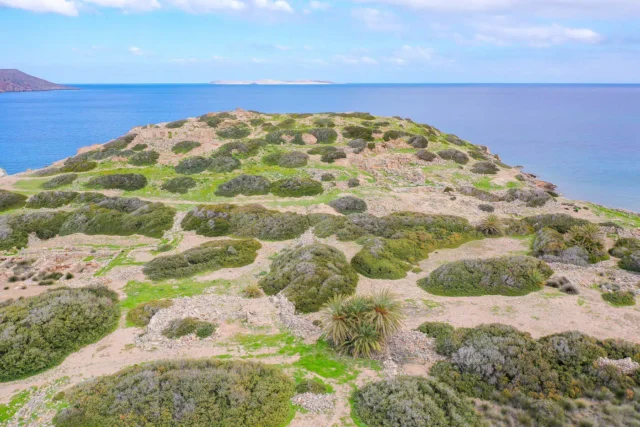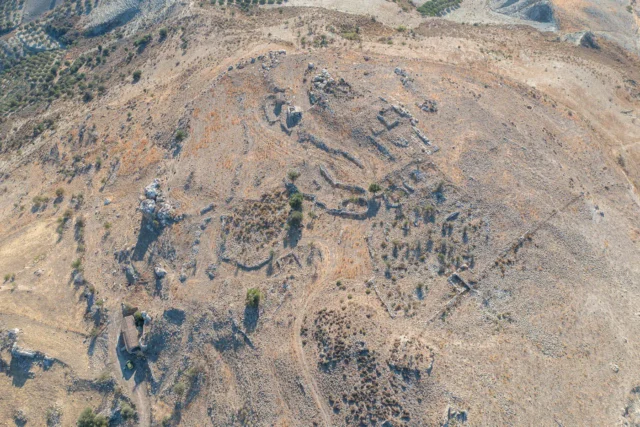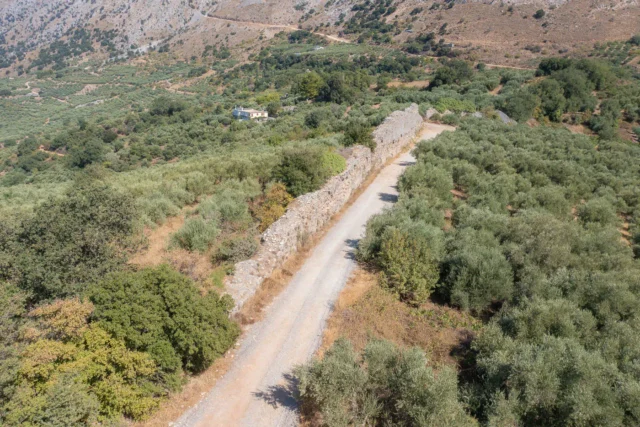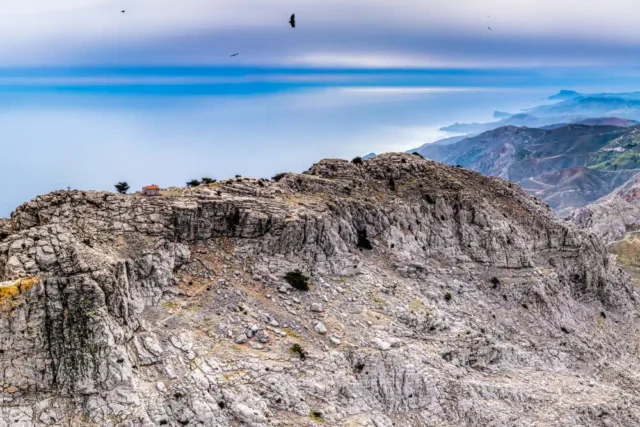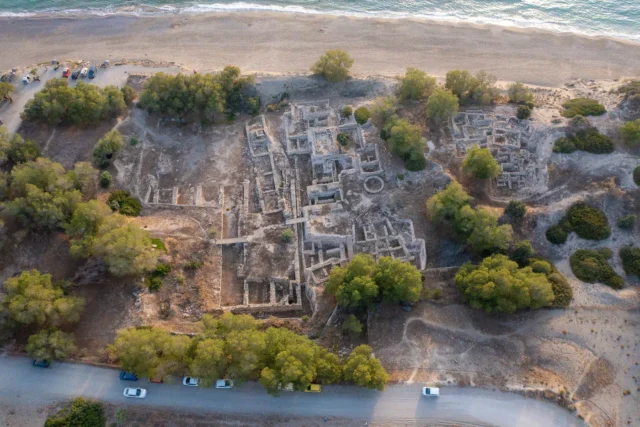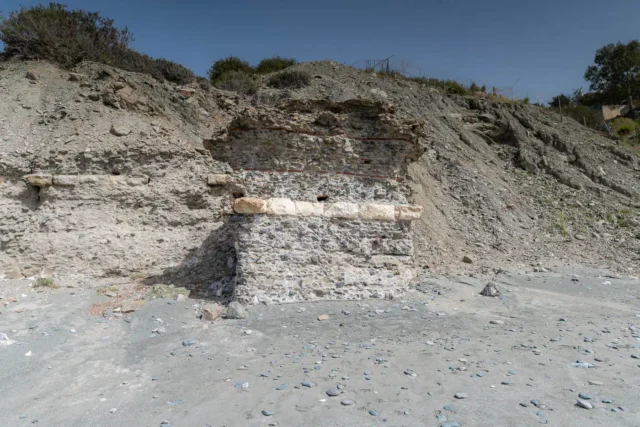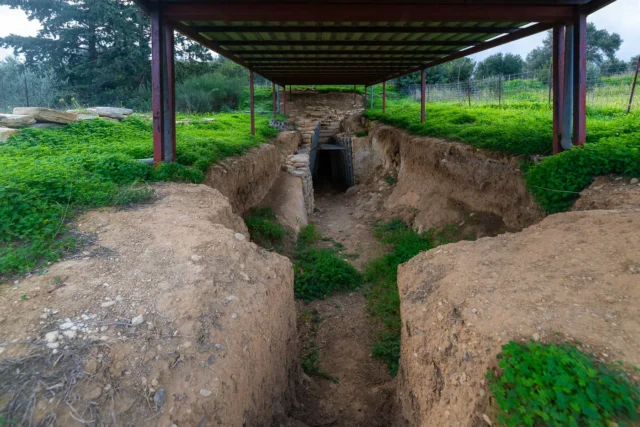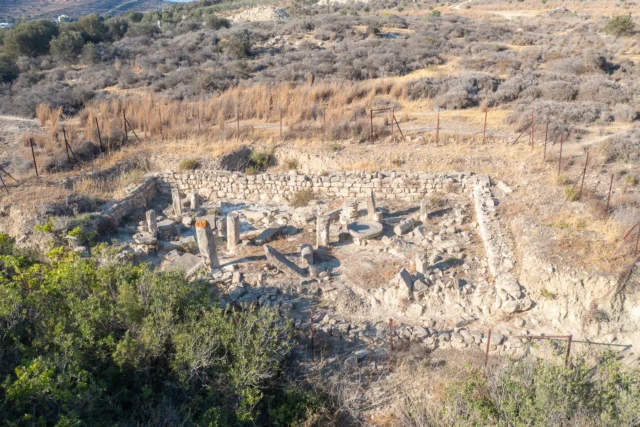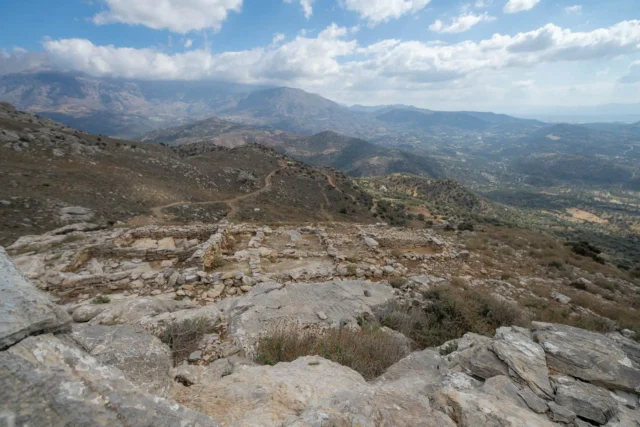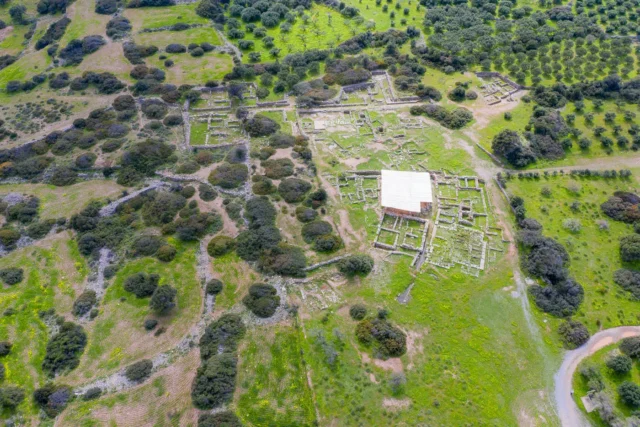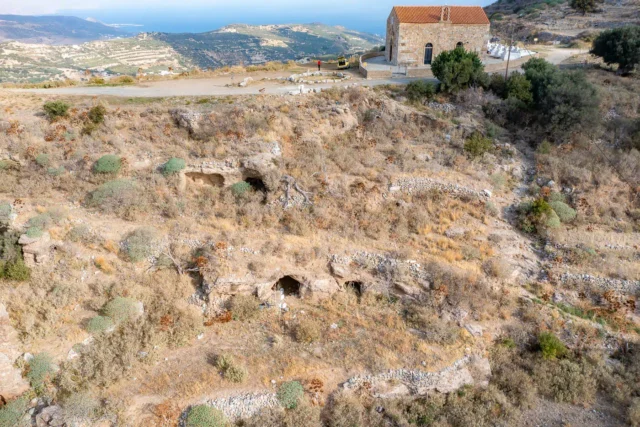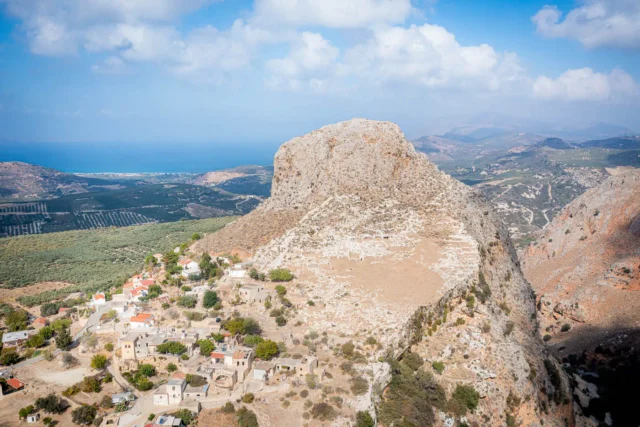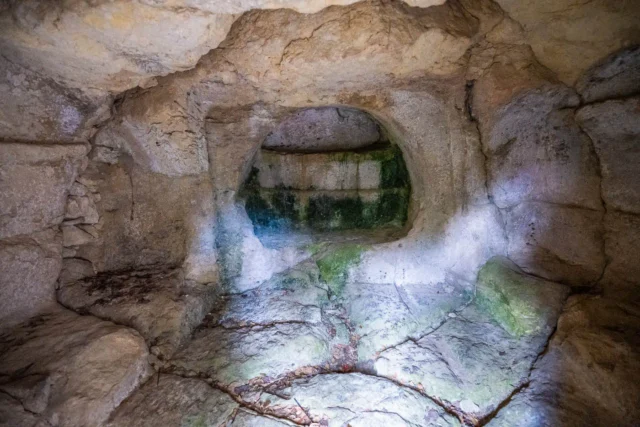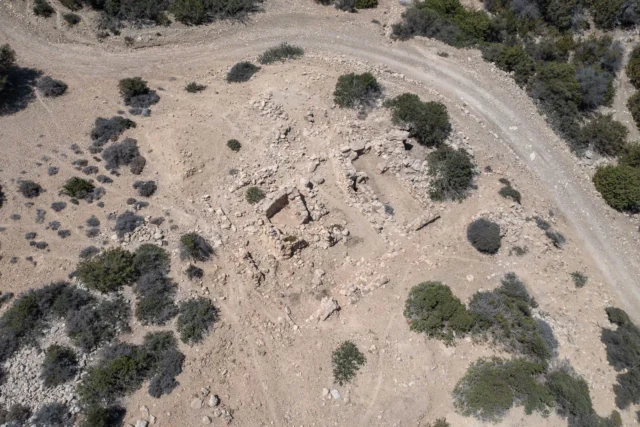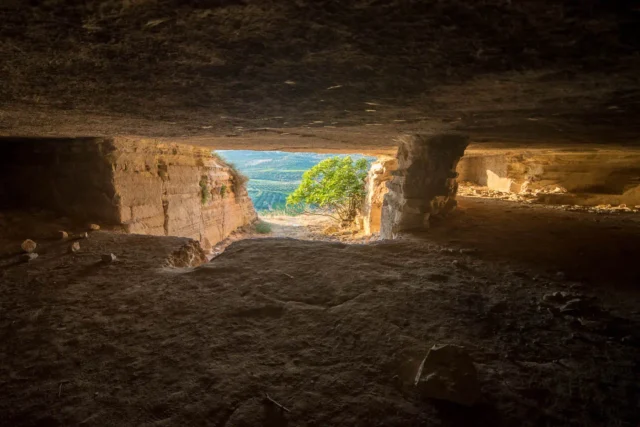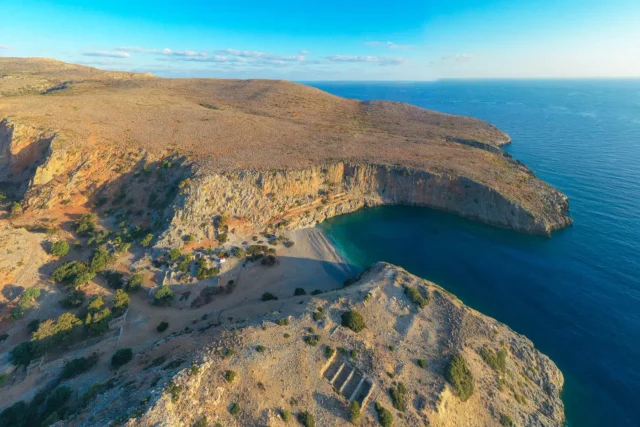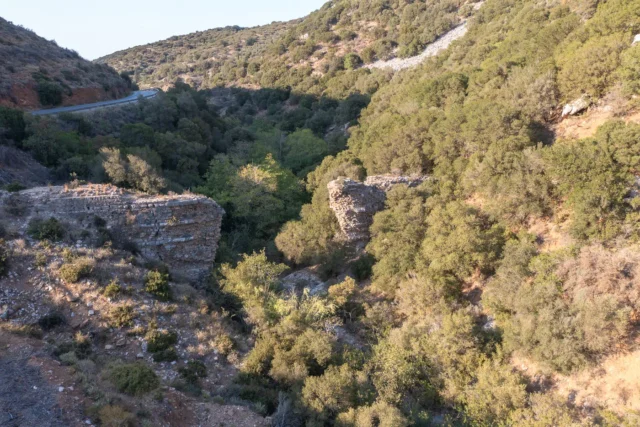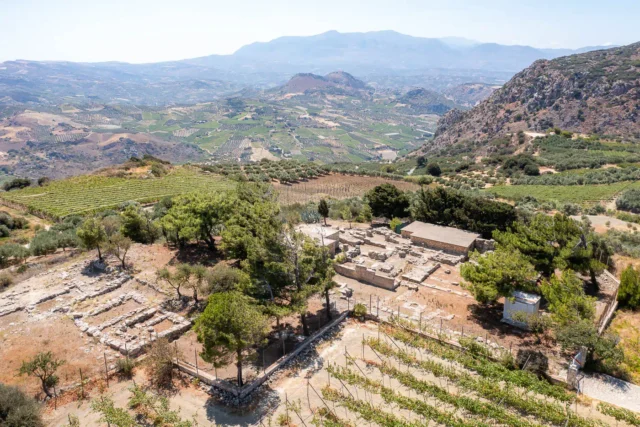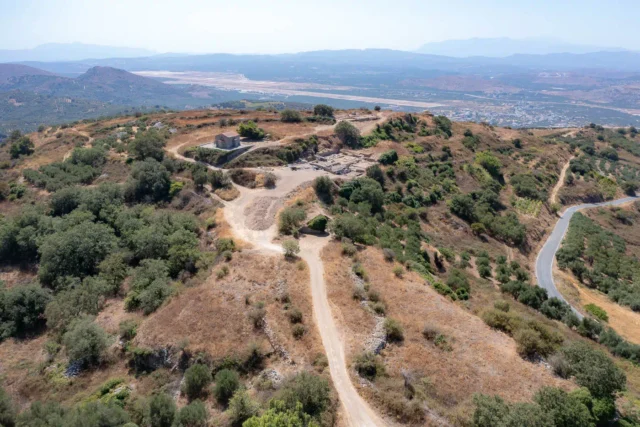
Ancient Lyktos (or Lyttos)
Lyttos, once known as Lyktos, is an ancient city steeped in history, with possible roots in the Minoan civilization. Archaeological evidence suggests a vibrant past, with the city flourishing through the Mycenaean, Archaic, Classical, Hellenistic, and Roman periods. The city's strategic location and powerful alliances contributed to its prominence in Crete. Excavations have revealed significant structures, including fortifications, public buildings, and residential areas, offering a glimpse into Lyttos' rich cultural heritage.
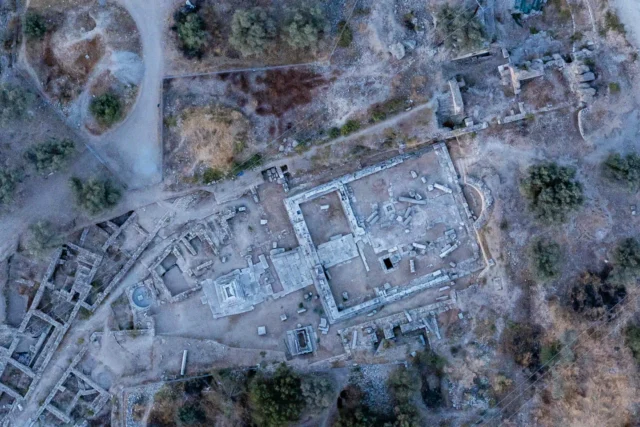
Gortyna archaeological site
8:00 am - 7:00 pm
Gortyna, located on Crete's Mesara Plain, was a major ancient city second only to Knossos. Inhabited since the Neolithic period (7000 BC), it flourished during the Bronze Age under Minoan and Mycenaean civilizations. By the Archaic and Classical periods, Gortyna was a powerful city-state, sometimes allied with, sometimes rivaling, Knossos. In 67 BC, Romans conquered Crete, making Gortyna capital of the province of Crete and Cyrenaica. The city thrived under Roman rule, with new infrastructure like the Praetorium, amphitheater, and Sanctuary of the Egyptian Gods.
A key discovery is the Gortyn code, the oldest known complete ancient Greek law, offering insights into 5th century BC social, economic, and legal structures. Gortyna embraced Christianity during the Byzantine era, evidenced by the Basilica of Saint Titus. The Arab conquest in the 9th century AD led to its decline. Today, Gortyna is a major archaeological site with ongoing excavations. Key sites include the Praetorium, Odeon (housing the Gortyn code inscription), amphitheater, Pythion Theater, Sanctuary of the Egyptian Gods, Basilica of Saint Titus, and Acropolis.
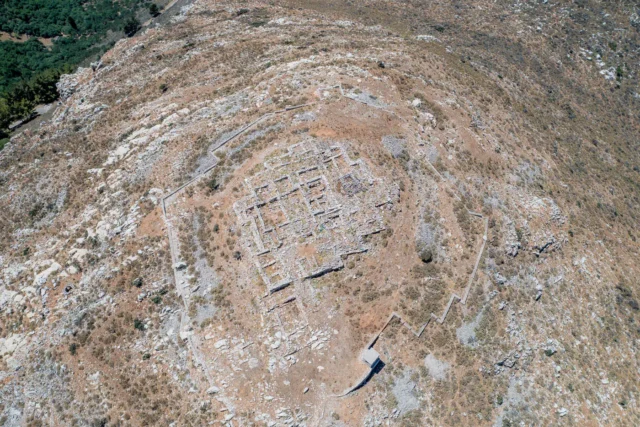
Acropolis Smari
The Acropolis of Smari, located on the peak of Prophet Elias near Smari, Crete, is an archaeological site with ruins dating back to the Minoan period (1800 BC to 630 BC). The site features a sanctuary dedicated to Athena Ergani, with ceramic plaques depicting the goddess considered the oldest representations of Athena in Crete. The Acropolis is enclosed by a strong defensive wall and contains settlements, buildings, and terraces for cultivation. Excavations have revealed structures like Megaron A, Megaron B, and Megaron Δ, each with unique features. The walls surrounding the hilltop are the most significant structures, built with large limestone blocks and smaller rectangular stones.

Amnisos Sanctuary of Zeus Thenatas
The Sanctuary of Zeus Thenatas at Amnisos, located on the north-central coast of Crete near Heraklion, is an archaeological site with a rich history spanning from the Bronze Age to the Early Iron Age. The sanctuary is dedicated to Zeus Thenatas, a deity associated with both Minoan and Mycenaean traditions. Amnisos, mentioned in Homer's Odyssey, was a significant center for maritime activities and trade during the Bronze Age. Excavations have revealed a 44-meter-long ashlar wall, smaller podia, and a thick layer of ash and burnt animal bones, suggesting animal sacrifice and ritual feasting. Votive offerings include bronze tripods, figurines, miniature weapons, and terracotta figurines of bulls and horses. The sanctuary exemplifies the continuity and change in Cretan religious practices, with the site's dedication to Zeus Thenatas reflecting Minoan traditions, while the adoption of new votive practices and the presence of faience objects highlight the evolving nature of religious expression. The sanctuary was operational from the Protogeometric period (c. 900 BC) to the end of the Early Iron Age (c. 600 BC), with two main phases of use marked by the construction of two temples: Temple A (Late Subminoan period to around 800 BC) and Temple B (around 800 BC to c. 600 BC).

Amnisos Villa of the Lilies
Amnissos, an ancient Minoan port city located on Crete's north coast, boasts the luxurious Villa of the Lilies. This two-story villa, constructed with ashlar blocks during the Middle Minoan IIIA period (around the 17th century BC), features a hall with multiple doors, a bathroom, stairs, and covered paved areas. Its name comes from the frescoes of lilies that once decorated its walls. The villa, excavated in 1932 by Spyridon Marinatos, was likely destroyed by an earthquake or tidal wave around 1500 BC. Amnissos is also significant for its mythological connection to Zeus, whose omphalos (navel) is said to have fallen there. The area was referred to as the Omphalian Plain. The name Amnissos appears in Linear B inscriptions, indicating its importance to the Minoan civilization. The presence of the harbor, various buildings, and an open-air archaic sanctuary dedicated to Zeus further underscores its historical significance.

Ancient Axos (Oaxos)
Oaxos, also known as Axos, was an ancient Cretan city in the Mylopotamos region, inhabited from the Neolithic to the Venetian period. It was known for its strategic location, association with the Idaean Cave, and connections with cities like Knossos and Eleutherna.
Archaeological findings reveal remnants from various periods, including cyclopean walls, terracotta idols, and bronze molds. Oaxos participated in interstate contracts and had its own coinage, featuring Apollo, Artemis, and Zeus, reflecting religious beliefs. The city was a member of the Cretan "Koinon."
Oaxos was eventually destroyed by the Venetians. Today, only a few ruins remain, with some artifacts housed in the Heraklion Archaeological Museum.
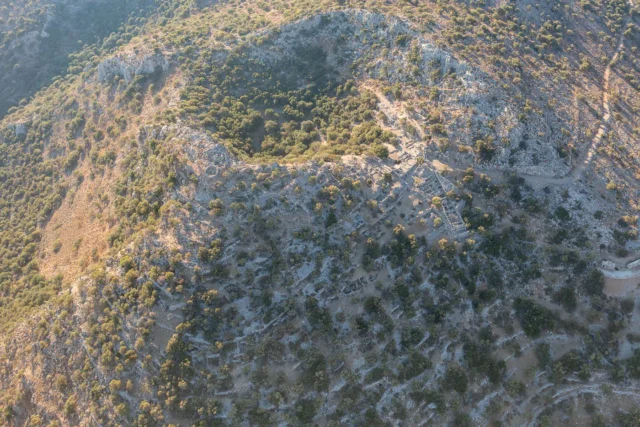
Ancient Lato
Now closed
Lato, an ancient city in Crete, reached its peak after the Dorian arrival. Named after the goddess Leto, Lato was strategically located on a hilltop overlooking the Mirabello Gulf. The city was heavily fortified, with strong walls, gates, and towers. Lato was one of the most powerful city-states in ancient Crete, with a well-organized political structure and a thriving economy. The city's port, Lato pros Kamara, facilitated trade and contributed to its growth. The archaeological site of Lato features well-preserved remains, including the agora, prytaneion, theater, temples, and private houses. Lato was eventually abandoned in the Roman era but was rediscovered in the late 19th and early 20th centuries. Today, it is a popular tourist destination, offering visitors a glimpse into the life of an ancient Cretan city. Lato was the birthplace of Nearchus, a famous admiral who served under Alexander the Great.
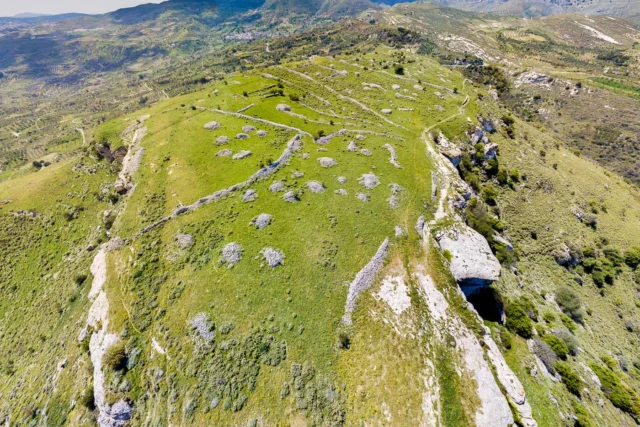
Ancient Rizinia
Rhizenia, also known as Prinias, was a city in central Crete during the Late Minoan IIIC period (around 1200 BC). Located on the Patela plateau, it held a strategic position overlooking key communication routes. Rhizenia likely played a crucial role in the region's political and economic landscape. The necropolis of Siderospilia has revealed much about burial practices and social structures of the time. The city's political system was unique, possibly incorporating both aristocratic and democratic elements. Archaeological investigations have revealed insights into urban layout, religious practices, and daily life. Imported artifacts from Cyprus and Egypt underscore Rhizenia's integration into a wider network of exchange during the Early Iron Age.
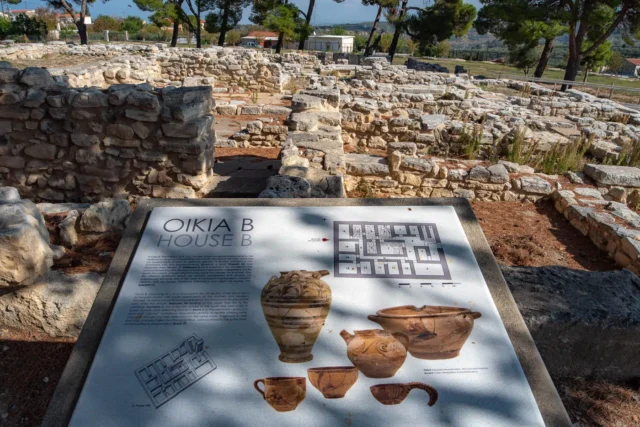
Ancient Tylissos
Now closed
Tylissos, an ancient Minoan town located on the slopes of Mount Psiloritis in Crete, thrived between 1650 and 1200 BC. The town's strategic location on a major Minoan road contributed to its prosperity. Excavations have revealed three grand palaces (Megaron A, B, and C), showcasing remarkable Minoan architecture. Megaron A, the best-preserved, features a central courtyard, apartments, and storage rooms.
Significant finds include bronze cauldrons, a bronze figurine, Linear A tablets, and miniature frescoes comparable to those found in Knossos. These discoveries suggest Tylissos was a center for bronze working and played an important role in the Minoan civilization. Numerous tombs dating back to 1400-1200 BC have also been unearthed, containing painted sarcophagi, vases, jewelry, and seals, offering further insights into Minoan burial practices and culture.

Anemospilia
Anemospilia, a Minoan archaeological site on Mount Juktas in Crete, offers a unique glimpse into Minoan religious practices and beliefs. Discovered in 1979, the site features a rectangular building with four rooms, destroyed by an earthquake in the 17th century BC. The eastern chamber contains remnants of a stepped altar with offerings, fragments of pithoi with traces of food, and reconstructed vessels depicting religious ceremonies. The vestibule housed a crushed skeleton and numerous vessels. The central chamber contains a stone altar, believed to be the base of a life-sized wooden statue, with traces of vessels and a box containing a piece of rock symbolizing the earth. The western chamber contained three skeletons, including a young man found on a platform with a decorated knife, leading to interpretations of human sacrifice.

Apesokari Tholos tombs
The Apesokari Tholos Tombs in Crete are significant Early Minoan burial sites. Tholos Tomb A features a unique circular burial chamber and annex, used for both primary and secondary burials. Tholos Tomb B includes multiple rooms with evidence of communal drinking and larnax burials. Both tombs offer valuable insights into Early Minoan funerary practices and social organization.
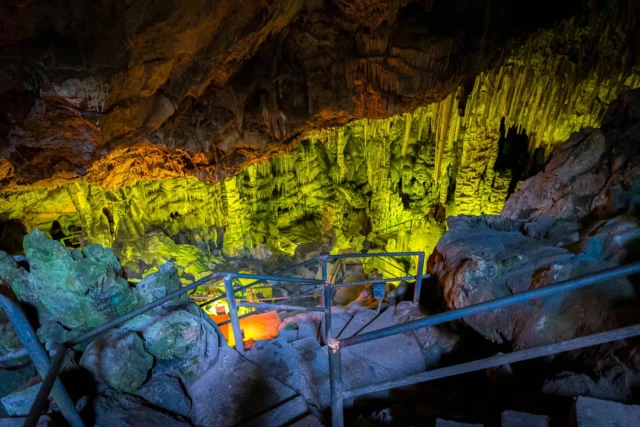
Dikteon Antron cave
8:00 am - 8:00 pm
Dikteon Antron, also known as Psychro Cave, is a site of significant mythological and archaeological importance located on Mount Dikti in Crete.
The cave's history spans from the Neolithic to the Roman period, primarily as a religious site. In Greek mythology, it is renowned as the birthplace of Zeus.
The cave's interior features a wealth of stalactites and stalagmites, as well as a lake. Archaeological excavations have uncovered artifacts from various periods, attesting to its continuous use by humans. Open to the public, visitors can explore the cave's chambers and witness its geological formations.

Festos (Phaistos)
8:00 am - 8:00 pm
Phaistos, a significant Minoan city in Crete, second in importance to Knossos, located in the Messara Plain. It dates back to 4000 BCE with a palace built in 1900-1700 BCE. The city was destroyed by an earthquake around 1700 BCE and rebuilt with a larger palace. Phaistos had connections with Knossos, Hagia Triada, and Gortyn. Important findings include the Phaistos Disk, Kamares Ware, and architectural remains. After a decline, Phaistos was reoccupied in the Hellenistic period (c. 323-67 BCE) until conquered by Gortyn.
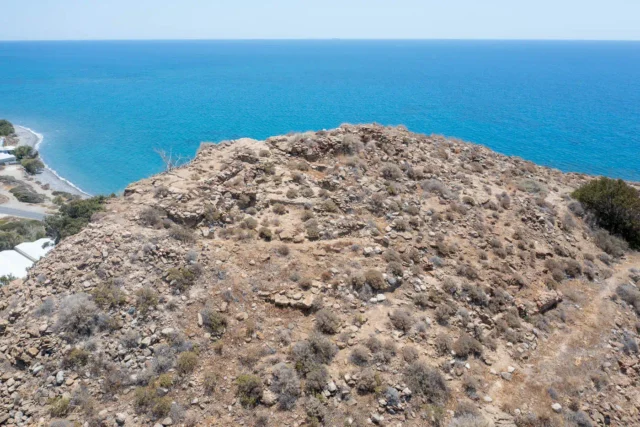
Fournou Koryfi
Fournou Korifi, an Early Minoan settlement near Myrtos village in Crete, dating back to the mid-3rd millennium BCE, provides valuable insights into the Minoan civilization. The settlement, with approximately 90 rooms during its peak, features the "Myrtos Goddess" figurine and evidence of workshops and diverse economic activities. Archaeologists, including Peter Warren, have studied the site's social structures, with interpretations ranging from communal living to a more complex hierarchy. The South House offers a glimpse into domestic life with its weaving room and kitchen. Fournou Korifi's well-preserved remains contribute to our understanding of Early Minoan architecture, social organization, and daily life.
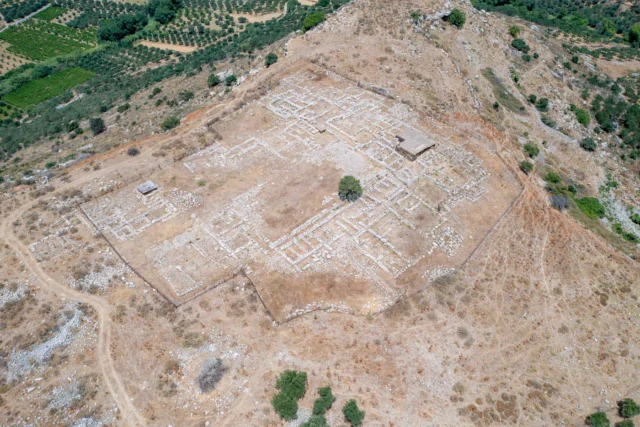
Galatas Minoan Palace
Galatas Palace, located in the Pediada region of central Crete, offers unique insights into Neopalatial Minoan architecture and sociopolitical organization. The palace, dating back to the Middle Minoan IIIB/Late Minoan IA period, covers approximately 1 hectare. Excavations completed in 2005 revealed evidence of a thriving town existing on the hillside during the Old Palace period. The West Wing housed centrally controlled activities like large-scale grain grinding and ceremonial feasting, while the East Wing, particularly the Pillar Hall and Column Hall, appears designed for social gatherings. In the Late Minoan IA period, Galatas experienced a decline with sections of the palace abandoned, indicating a shift in the palace's functions and the region's sociopolitical landscape.

Gerokampos Tholos Tomb
The Lebena Gerokampos Tholos Tomb is an Early Minoan I-II (c. 3100-2600 BCE) archaeological site located near Lentas, on the southern coast of Crete, close to the ancient Minoan settlement of Lebena. The tomb, with an interior diameter of approximately 5 meters, is typical of tholos tombs, with a circular chamber built of large stones and a corbelled vault. The tomb also features several smaller chambers or annexes, which were added later. These annexes, along with the main tholos, served as spaces for burial and ritual activities. A large quantity of pottery, including pyxides, tankards, cups, and bowls, was found in the tomb. The tomb contained the skeletal remains of numerous individuals, providing evidence of collective burial practices. Other significant finds from the tomb include jewelry, tools, and figurines.
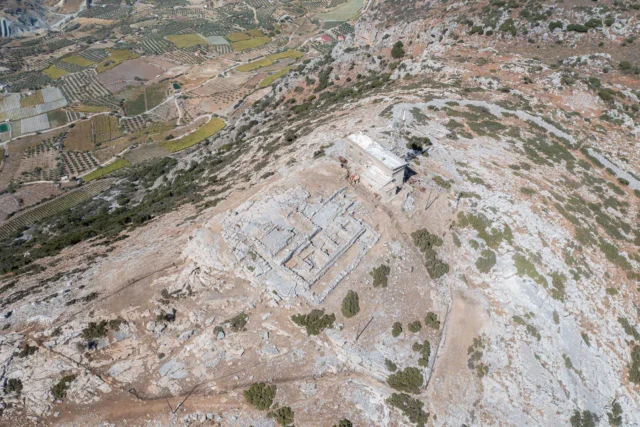
Giouchtas Minoan Peak Sanctuary
The Giouchtas Minoan Peak Sanctuary, located on the mountain of Giouchtas near Epano Archanes in Crete, is an archaeological site dating back to the Early Bronze Age. The site is associated with Minoan religion and offers insights into the ritual practices and beliefs of the Minoan civilization. Archaeological investigations have revealed structures, including a temenos, and artifacts like clay figurines and pottery fragments. The sanctuary's location on a mountain peak is characteristic of Minoan peak sanctuaries, chosen for its association with the divine realm and visibility. The Giouchtas sanctuary is located near Knossos and Archanes, suggesting it played an important role in the religious and social life of the Minoan people.

Hierapytna
Hierapytna, located on the southern coast of Crete, was founded in the Geometric period (c. 9th century BC). The city was a major hub for trade and commerce in ancient times and played a significant role in the island's political and military affairs. Hierapytna flourished during the Hellenistic and Roman periods. It became part of the Byzantine Empire after the division of the Roman Empire. Following the Arab conquest of Crete in the 9th century, Hierapytna was abandoned. Modern archaeological investigations have revealed a wealth of information about the city, including its city walls, agora, temple, theater, and private houses.
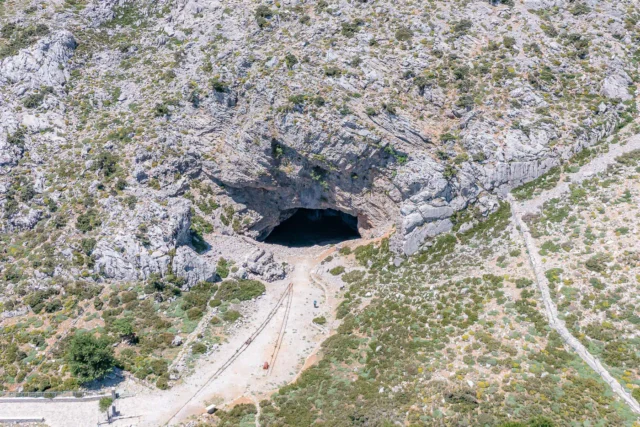
Ideon Antro cave
Now closed
Ideon Antron Cave, also known as "Spiliara" or "Cave of the Shepherdess," is located high on the slopes of Mount Ida on the Nida Plateau, Crete, 20 km from Anogia village at 1498 meters above sea level. In Greek mythology, this is where Rhea hid Zeus from Cronus. Archaeological excavations have revealed a rich history of human activity, dating back to the Neolithic period. The cave was used for worship for centuries, with peak activity during the Geometric and Archaic periods. It's open to the public from July to November, except on Tuesdays.

Kamilari Roman graveyard
The Roman Tombs of Kamilari, located in southern Crete, are an archaeological site that offers a glimpse into the island's history during the Roman period. Discovered in 2010, the tombs are situated at the foot of Evgora Hill, close to Metochi Kamiliariou. The area was known locally as "Xospilios," possibly derived from the Greek word for cave ("spilaio"). The tombs are estimated to have been constructed around 50 AD, based on discovered coins, and provide valuable insights into Roman burial practices. The site is under the supervision of the Archaeological Service.

Knossos archaeological site
The Palace of Knossos, located on the Kephala hill south of Heraklion, Crete, is an important site of the ancient Minoan civilization. Occupied since around 7000 BCE during the Aceramic Neolithic period. The First Palace, built during the Middle Minoan IB-IIA period, represents a significant shift in Minoan society from a clan-based structure to a hierarchical one. This monumental building, covering nearly 10,000 square meters on the ground floor alone, served as a hub for administrative, storage, and cult activities. The First Palace also introduced innovative features like storage magazines, showcasing the society's wealth and resources. The New Palace emerged after a massive earthquake that occurred at the end of the Middle Minoan IIIA period, the palace underwent major reconstruction in the Middle Minoan IIIB period. Around 1450 BCE, widespread destruction occurred across Crete, affecting palaces and settlements. While Knossos suffered damage, it wasn't destroyed like other palaces. This period saw the introduction of Linear B, an early form of Greek script used by the Mycenaeans, suggesting their presence at Knossos. The final destruction of the palace, possibly in Late Minoan IIIA2 (1325-1300 BCE), left it deserted, but the town continued to exist. Knossos continued to be inhabited during the Classical, Hellenistic and Roman periods. Two basilicas from the First Byzantine period indicate that the city was still active during this time. Knossos appears to have followed the fate of other urban centers in Crete and declined early.
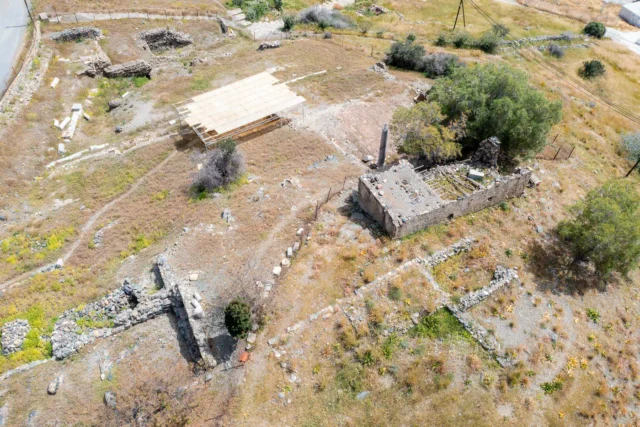
Lebena (Leveen)
Lebena, an ancient city on Crete's southern coast, is renowned for its Sanctuary of Asclepius, the Greek god of medicine. The city's strategic location near a good harbor and its association with the healing cult of Asclepius made it an important center for both trade and religious pilgrimage. Lebena was also a significant port for trade and commerce with the East during the Prepalatial period. The site of Lebena has a long history of occupation, with evidence of inhabitation dating back to the Neolithic and Early Minoan periods (ca. 3rd millennium BC). The presence of a variety of Eastern imports in secure Prepalatial contexts at Lebena, including faience, gold, ivory, and Egyptian scarabs, suggests that Lebena was a significant port for trade and commerce with the East during this time. In the Late Classical period (ca. 4th century BC), the Gortynians established the sanctuary dedicated to Asclepius at the harbor. The city was destroyed by a powerful earthquake in 46 BC but was subsequently rebuilt. The sanctuary continued to flourish throughout the Roman period, as evidenced by the numerous inscriptions and archaeological finds from the site. The strategic location of Lebena on the south coast of Crete made it an ideal location for a port. The sheltered bay would have provided a safe harbor for ships, and the proximity to the Asterousia Mountains would have offered protection from storms. Additionally, Lebena's location on the south coast would have made it a convenient stopping point for ships traveling between the Aegean and the Near East. The presence of Eastern imports at Lebena suggests that the site was an important point of contact between Crete and the East during the Prepalatial period.
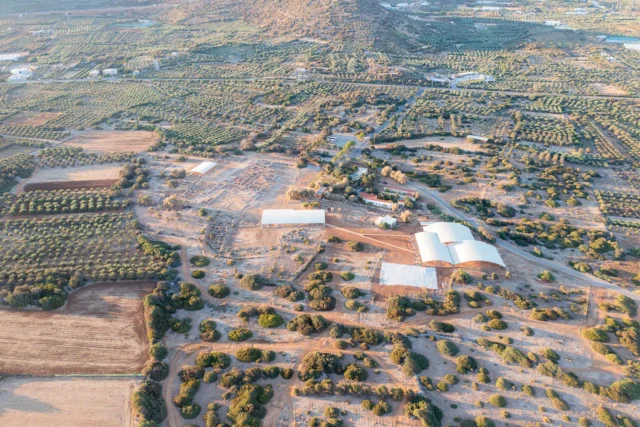
Malia Minoan Palace
Now closed
The Minoan archaeological site at Malia, located on the northern coast of Crete, is a significant site for understanding the Bronze Age civilization. The Palace of Malia is the third largest Minoan palace discovered. The palace and surrounding town and cemeteries offer a glimpse into the complex social, political, economic, and religious structures of Minoan society. The area was inhabited as early as the Early Neolithic period. The first monumental architecture at Malia, often referred to as the Old Palace, dates to the Early Minoan IIB period. This structure, or group of structures, was built around a large open space, sharing the same alignment as the later palace. The second palace, whose ruins are visible today, was built in the Late Minoan IA period, around 1650 BCE. It was constructed on the ruins of the Old Palace, inheriting its basic layout and orientation. The palace's central court, a defining feature of Minoan architecture, is oriented north-south. The New Palace at Malia met its demise around 1450 BCE, coinciding with the destruction of other Minoan sites across Crete. The cause of this widespread destruction remains a topic of scholarly debate.

Minoan Palace of Epano Archanes
The Minoan Palace of Epano Archanes, also known as the Tourkogeitonia Palace, is a significant archaeological site located in the village of Epano Archanes on the island of Crete, Greece. This palatial complex dates back to the Neopalatial period of the Minoan civilization (around 1700-1450 BC). It is smaller than the palaces of Knossos, Phaistos, and Malia, but boasts a unique architectural layout with multiple wings and levels, and impressive features including an elaborate drainage system. The palace likely played a crucial role in the economic and religious life of the surrounding community. Excavations at the site have unearthed a wealth of artifacts, including pottery, tools, figurines, and seal stones, shedding light on the daily life, artistic traditions, and religious practices of the Minoans. A recent discovery in 2024 unearthed a unique Gate Shrine located outside the main entrance, the first of its kind at a Minoan palace, shedding new light on the religious practices and beliefs of this ancient civilization.
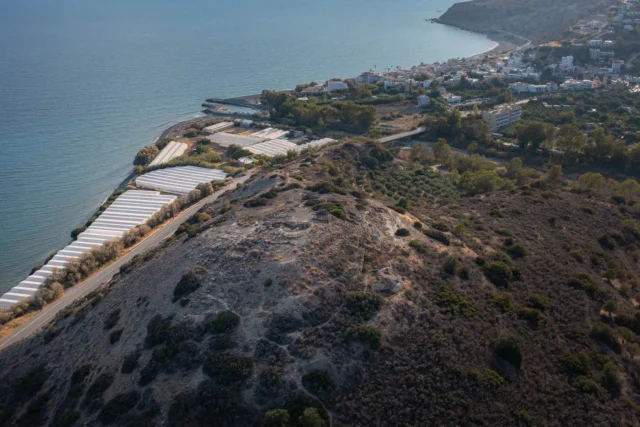
Myrtos archaeological site
The Myrtos-Pyrgos archaeological site, also known as Pyrgos, is a significant Minoan Bronze Age settlement located on the southern coast of Crete, near Ierapetra. Occupied from the Early Minoan II to the Late Minoan IB period, it provides valuable insights into the development of the Minoan civilization. The site's strategic location and long occupation history make it a key resource for understanding the social, economic, and political dynamics of this ancient society. Excavations have revealed a variety of artifacts, including seals, seal impressions, Linear A tablets, and inscriptions on clay vessels, shedding light on the evolution of communication, administrative practices, and trade networks in Minoan Crete. The site's chronological phases, from Pyrgos I to Pyrgos IV, show a growing cultural sophistication and connections with other parts of Crete, including Malia and Knossos. The final phase, Pyrgos IV, ended with a catastrophic fire that destroyed much of the settlement, marking the end of its prominence.

Olous
Olous, an ancient Cretan harbor city, now largely submerged off the coast of Elounda, was inhabited from the Early Minoan period through the Hellenistic period. Its strategic location in the Mirabello Gulf made it a significant maritime hub, connecting the Eastern and Western Mediterranean. Archaeological investigations, including underwater surveys, have revealed remnants of Minoan cemeteries, fortifications, and possible public buildings. The city's history is intertwined with that of other Cretan powers like Knossos and Lato. Olous was known for its temple to Britomartis and its connections with Ptolemaic Egypt. Today, the site offers a glimpse into Crete's rich maritime past.

Platanos Minoan tholos tombs
The Minoan tholos tombs at Platanos, located in the Messara Plain of Crete, are significant archaeological remains from the Prepalatial period (c. 3200-2000 BC). Excavated in the early 20th century, the site features three tholos tombs (circular, beehive-shaped burial chambers) and a paved courtyard. The tombs, labeled A, B, and C, vary in size and preservation. Tomb A, the largest, has an internal diameter of 13 meters. The tombs contained many artifacts, including seals, figurines, pottery vessels, stone vessels, gold jewelry, and bronze tools. These findings provide valuable insights into Minoan funerary practices and material culture during the Prepalatial period. The presence of imported objects, such as an ancient Babylonian cylinder seal and Egyptian scarabs, also highlights the extensive trade networks that connected Crete with other civilizations in the Eastern Mediterranean.
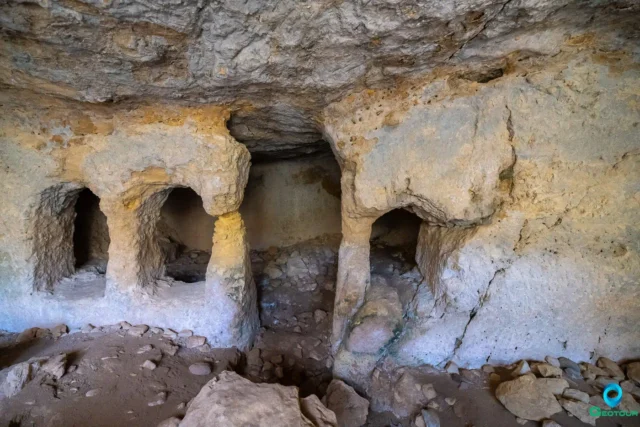
Siderospilia near Roufas
Siderospilia, meaning "Iron Caves," is a complex of three interconnected chambers carved into limestone bedrock near Roufas, Crete. Its purpose is debated, with theories ranging from blacksmith workshop to Roman-era burial site. Chamber 1 features a broken supporting column, roof opening, and stone bench. Chamber 2 is larger, with niches for burials. Chamber 3 resembles an early Christian church, with a dividing wall and door. Local legends link the cave to blacksmiths, ghosts, and eerie sounds. Some believe it was a dwelling before becoming a necropolis. The cave's location near a stream and possible ancient structures adds to its significance. Siderospilia is accessible but lacks official signage.

Sklavokambos
The Sklavokampos Farm Estate, a significant Late Minoan period archaeological site in Crete, Greece, offers a unique window into Minoan life. Discovered in 1930, the estate is located southwest of Heraklion, near Tylissos. The estate's strategic location near the Minoan road network and the fertile Messara Plain suggests it played a crucial role in agricultural production and trade. The estate's architecture is simpler than Minoan palaces, featuring 17 rooms across three levels. The site includes a main room with artifacts like a clay ox head, a Late Minoan IB jug, and a stone rhyton. Sealings from Sklavokampos have been found at other Minoan sites such as Zakros, Gournia, and Hagia Triada, indicating connections across Crete. The estate also housed a small shrine, storerooms for agricultural products, and a toilet with an underground drain. Evidence suggests the estate was part of a larger settlement destroyed by fire, possibly during the Late Minoan IB period.
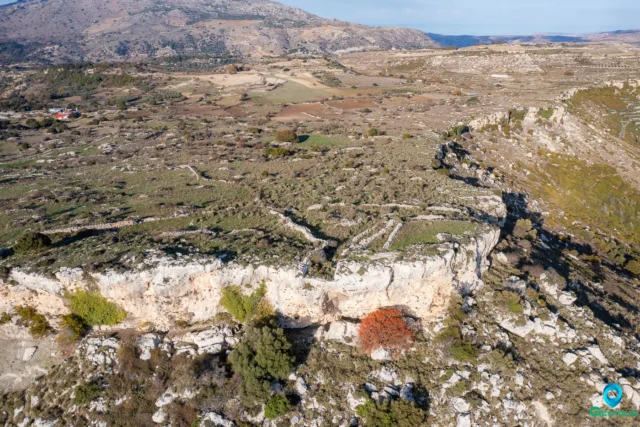
The Archaeological Site of Onithe
Onithe, an archaeological site near Goulediana in Rethymno, Crete, offers a glimpse into the island's history from the Neolithic period to the Venetian and Ottoman eras. Its strategic location on a plateau provided control over key passages and natural defenses. The site features ruins like the Acropolis with its pseudo-isodomic walls and tower, House A with its abundance of pottery and pithoi, an ancient spring and possible sanctuary, and a Paleochristian Basilica with well-preserved mosaics.
The ancient name of the city remains uncertain, with scholarly attempts to identify it as Osmida or Phalanna remaining inconclusive. It may have been an early settlement center for ancient Rhithymna. The site has yielded artifacts like pottery shards, a bronze zodiac, exquisite metalwork, and sculptures, providing evidence of its prosperity and cultural vibrancy throughout the Minoan, Archaic, Classical, Hellenistic, Roman, and Byzantine periods.
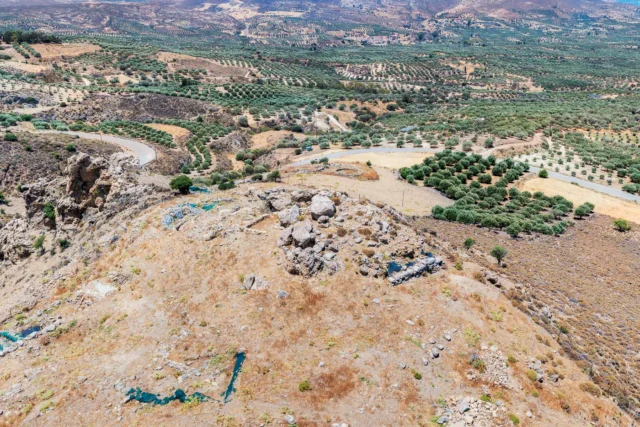
The Minoan Settlement and Cemetery at Koumasa
Koumasa, an important Minoan archaeological site in southern Crete, is located about 15 km south of Gortyn. The site is significant for its Prepalatial cemetery and Minoan settlement, providing insights into the lives and customs of the Minoans during the Prepalatial period.
The Cemetery at Koumasa consists of three circular tholos tombs, a square tomb, and a circular ossuary. Excavations uncovered artifacts, including a clay figurine depicting a bull-leaping scene, Cycladic figurines, stone offering tables, and gold jewelry.
The Minoan settlement at Koumasa is located on a hill overlooking the cemetery. Excavations have revealed an extensive settlement with evidence of domestic and industrial activities. The presence of large walls suggests the existence of substantial buildings.

The Necropolis of Phourni
The Phourni necropolis, near Archanes, Crete, is a significant Minoan burial site used from the Early Minoan II (EM II) to the Late Minoan IIIC (LM IIIC) periods. It features a variety of tomb types, including tholos tombs, rectangular tombs, and composite tombs, reflecting the evolution of Minoan funerary architecture and burial practices over time. Tholos tombs are beehive-shaped structures used for collective burials, while rectangular tombs resemble houses, suggesting a symbolic connection between the house of the living and the house of the dead. Composite tombs combine elements of both tholos and rectangular tomb architecture.
The necropolis has yielded a wealth of grave goods, including pottery, stone vases, metal objects, jewelry, and figurines, providing insights into the social structures and religious beliefs of the Minoans. The variety of tomb types and grave goods reflects the prosperity and social complexity of the Archanes valley. The architectural features and artistic motifs found at Phourni resonate with those found at Knossos, indicating cultural homogeneity and interaction between these two important centers. The religious beliefs of the Minoans are also reflected in the finds at Phourni, with religious symbols and ritual objects suggesting a belief in an afterlife and elaborate burial rituals.
The Phourni necropolis is the richest burial site in Crete and provides a unique glimpse into the burial practices, social structures, and religious beliefs of the Minoan civilization.

Tholos Tomb of Kamilari
The Tholos Tomb of Kamilari, located on a coastal hill near Phaistos in Crete, is the largest and most well-preserved Minoan tholos tomb. Constructed around 1900 BC, it offers valuable insights into Minoan funerary practices. The tomb's proximity to Agia Triada and Phaistos suggests a connection to the elites of these settlements. The Kamilari cemetery includes three tholos tombs, with Tholos A being the most preserved, featuring a circular chamber, external rooms, and an open-air courtyard. Tholos B and C are partially preserved, with Tholos C repurposed as a shrine dedicated to Demeter and Kore. A research project is underway to study the cemetery, including its stratigraphy, artifacts, and human remains. The project aims to understand the changing mortuary behavior and social choices of the communities who used the cemetery over centuries.
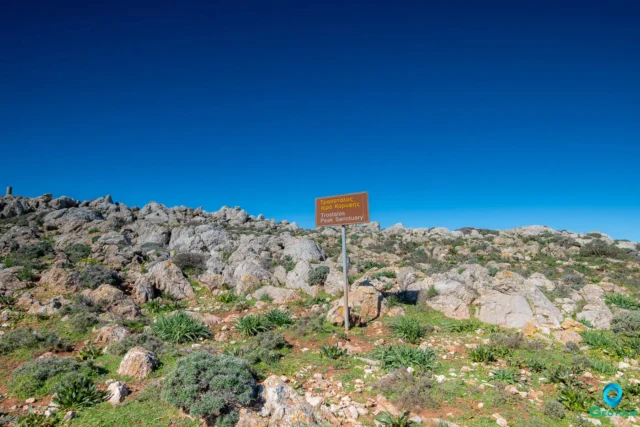
Traostalos Peak Sanctuary
The Traostalos Peak Sanctuary, located 3.2 km from the palace of Zakros in Crete, dates back to the Final Neolithic period (1700-1450 BCE). The site, partially excavated, features votive offerings, terracotta figurines, animal replicas, a clay model of a ship, bronze needles, gold ribbons, various vessels, and Linear A inscriptions. The sanctuary's decline in LM IB coincides with the rise of the Zakros palace and other peak sanctuaries' abandonment, possibly due to ideological shifts, earthquakes, or the Thera eruption. The site's lack of monumental dedications or evidence of large-scale animal consumption suggests less political influence compared to other peak sanctuaries. The construction of the Zakros palace marked a shift towards a more hierarchical social and political organization, contrasting with the public ceremonies at Traostalos. The sanctuary's abandonment after the wider area's unification under the palace indicates its connection to the early stages of state formation in Minoan Crete.
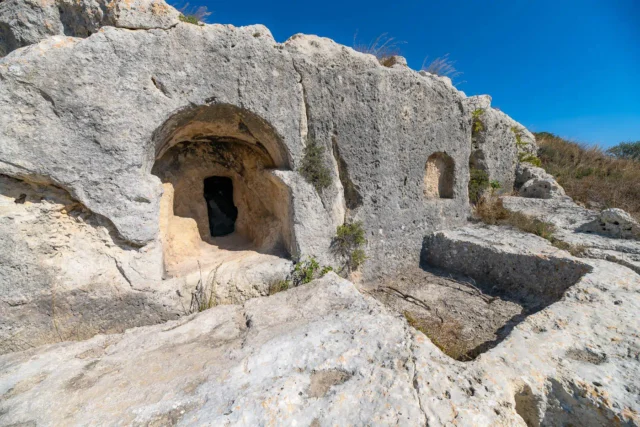
Vakiotes Acropolis
The Vakiotes Acropolis, located east of Sokaras village near Velouli and Apoini in Crete, is an archaeological site with dwellings and tombs carved into the rock. This unique construction, along with finds like wine presses and a Roman-era tomb, suggests a long period of occupation from the Geometric period to the Turkish era. The site's name and evidence of wine production may link it to the god Bacchus. Archaeological investigations have uncovered a tomb with silver denarii from the reigns of Roman emperors Vespasian, Trajan, and Domitian. The surrounding landscape also features remnants of a church and an old windmill. Declared a protected archaeological site in 2001, Vakiotes Acropolis offers a glimpse into ancient construction techniques and daily life.
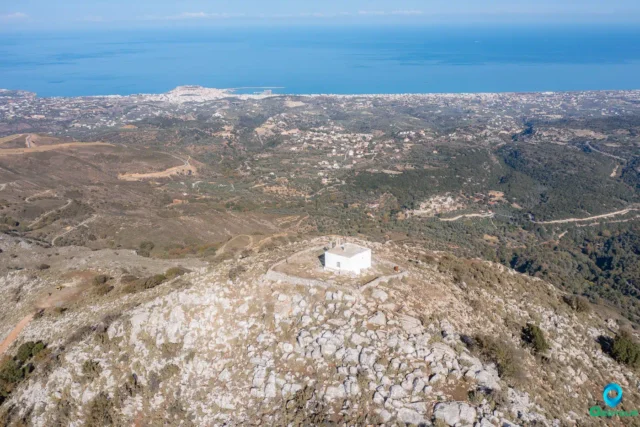
Vrysinas Peak Sanctuary
The Vrysinas Peak Sanctuary, located on the slopes of Mount Vrysinas in Crete, is a significant archaeological site that offers valuable insights into Minoan religion and culture. Excavations have revealed a wealth of artifacts, including human and animal figurines, pottery, horns of consecration, and a fragment of a libation table with a Linear A inscription. The sanctuary's unique position as the sole Neopalatial peak sanctuary in the region highlights its importance in the religious landscape of Minoan Crete. The site is easily accessible to visitors and provides a fascinating glimpse into the spiritual world of the Minoans.




